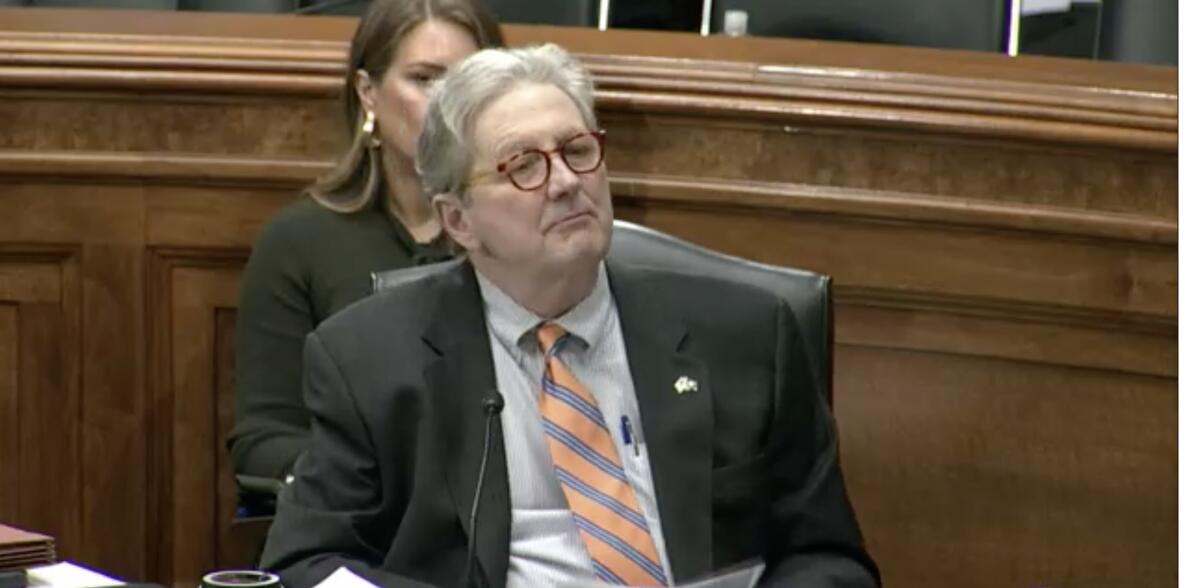Plan to kill 450K owls pushes past major obstacle with Republicans both for and against
A controversial plan to kill one owl species to save another cleared a major hurdle.
The full Senate on Wednesday struck down a GOP effort to prevent the cull of up to 450,000 barred owls in the Pacific Northwest over three decades, ending a saga that created strange political bedfellows.
It’s a major win for environmentalists and federal wildlife officials who want to protect northern spotted owls that have been crowded out by their larger, more aggressive cousins. In recent weeks they got an unlikely ally in loggers who said scuttling the U.S. Fish and Wildlife Service plan could hinder timber sales.
But it’s a blow to an equally unusual alliance that includes right-wing politicians and animal rights advocates who argue the cull is too expensive and inhumane. The Trump administration leaned on Republican lawmakers to get out of the way, scrambling partisan lines.
Sen. John Kennedy, a conservative from Louisiana, sought to nix the owl-killing plan via the Congressional Review Act, which can be used to overturn recent rules by federal agencies.
Kennedy said Interior Secretary Doug Burgum, whose portfolio includes timber production, recently called him and told him to abandon the resolution. This month logging advocates said that stopping the cull would jeopardize timber production goals set by the Trump administration.
But Kennedy was not persuaded.
“The secretary needed to call somebody who cared what he thought, because I think he’s wrong,” Kennedy said on the Senate floor. “I think he and the other members of the administrative state at the Department of the Interior decided to play God.”
Flanked by pictures of owls and bumbling cartoon hunter Elmer Fudd, Kennedy praised barred owls for their “soulful eyes” and “incredibly soft” feathers. But he acknowledged they’re better hunters than spotted owls. Barred owls, which moved over from eastern North America, are outcompeting spotted owls for food and shelter in their native territory.
Louisiana Senator John Kennedy spearheaded a resolution to overturn the Biden-era plan to cull barred owls, even after he said the Trump administration told him to back down.
(Senate Banking Committee)
Ultimately the resolution failed 72 to 25, with three lawmakers not voting. Nearly all those who voted in favor of the resolution were Republican, but even more Republicans voted against it. The Fish and Wildlife Service approved the barred owl cull last year under the Biden Administration.
“I feel a lot of relief because this was one of the most major threats to the long-term, continued existence of the northern spotted owl in many years,” said Tom Wheeler, executive director of the Environmental Protection Information Center. “We’ve passed this hurdle, which isn’t to say there aren’t other hurdles or road bumps up ahead, but this feels good.”
Wheeler described the failed effort as a “nuclear threat” — if the resolution had passed, the Fish and Wildlife Service would have been blocked from pursuing any similar rule, unless explicitly authorized by Congress.
Now Wheeler said he and his allies will continue to push for the owl cull to be carried out, and for federal funding to support it.
Animal welfare advocates like Wayne Pacelle, president of Animal Wellness Action and Center for a Humane Economy, are dismayed.
“What this means is that not only are barred owls at extreme risk of large-scale shooting, but spotted owls and old-growth forests are at risk from chainsaws,” Pacelle said of the failed resolution.
Pacelle’s camp vowed to continue the fight. A lawsuit challenging the hunt they filed against the federal government last fall is moving forward. And they’ll try to ensure money doesn’t flow to the program.
In May, federal officials canceled three related grants in California totaling more than $1.1 million, including one study that would have included lethally removing barred owls from more than 192,000 acres in Mendocino and Sonoma counties.
However, there are other projects to kill barred owls in the Golden State, according to Peter Tira, a spokesperson for the California Department of Fish and Wildlife.
One $4.3-million grant issued by the state agency will support barred owl removal in the northwestern part of the state, along with other research. Another grant issued by NASA to a university involves killing barred owls in California as well as creating a tool to prioritize areas where the raptors need to be managed.
It’s not clear how or if the government shutdown, now stretching into its 31st day, is affecting the projects, Tira said in an email.

